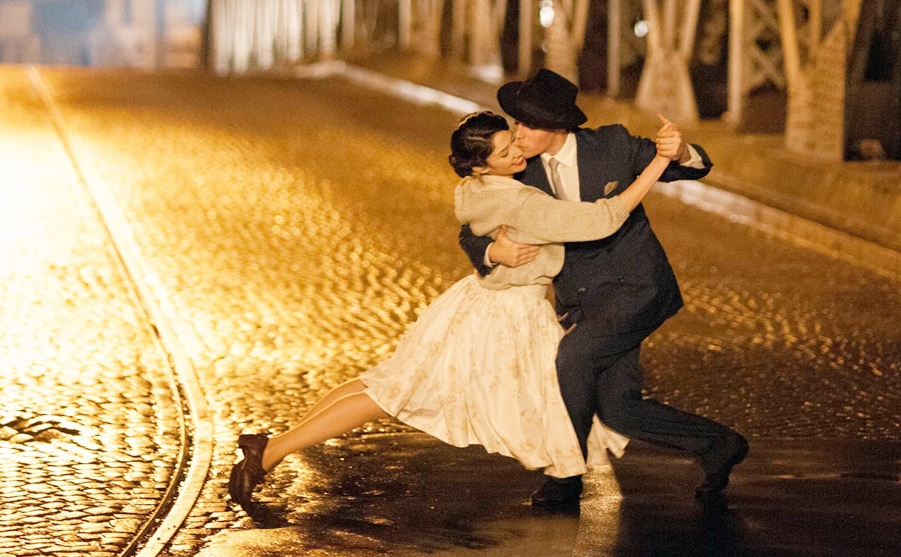Friday, 22 September 2017
All the right moves: "Our Last Tango"
The presence of Wim Wenders as executive producer presumably positions Our Last Tango as the Buena Vista Social Club of ballroom dancing documentaries. Here are a pair of Argentinian veterans of the sport - Maria Nieves Rego and Juan Carlos Copes, now in their eighties - reunited on stage for one last twirl, but not before they've had the occasion to pick through their photo albums, and surviving memories, in the company of the dancers enlisted to play their younger, lither selves in director German Kral's handsome, sepia-toned reconstructions. The reappearance of these performers as active rehearsal-room interrogators serves to signify just how fully Kral has embraced the theatre of the tango: key moments from the lives of her subjects are here recreated, either on elaborately appointed sets or exteriors in sequences that bear the marked influence of Wenders' 3D film on the work of Pina Bausch, not least in the crisp, striking way they describe the movement of bodies through space.
The stage is being set for what was, by all accounts, a grand, tempestuous romance. Copes and Nieves Rego first met in the dancehalls of Buenos Aires, and swiftly forged both a personal and professional bond: "I'd found my Stradivarius," shrugs Copes, a touch proprietorially. The fact the dancers are being interviewed separately, however, and that Maria generally proves far more forthcoming in her testimony than her erstwhile partner leads us to suspect some kind of rupture awaits, and so it proves. The great tragedy of this romance is that the trust that was so central to this relationship (dramatised in extracts from a remarkably fleet-footed table dance, where both participants are at every turn mere millimetres from turning an ankle) began to ebb away, life leading them in very different directions: Juan into fatherhood with another woman, Maria towards an altogether bruised attitude with regard to the opposite sex. Professionally, at least, they danced on, the former Stradivarius threatening to use her player as a mop and wipe the floor with him; it happens, in relationships.
While we wait for the reunion set up in the opening minutes - will this be a dance of love or hate? - Our Last Tango shapes up as a repository of wisdom on how to juggle one's personal life with one's other passions. For Maria, the question has always been how she could continue doing the thing she loved with or without the man she evidently feels betrayed her. (Could he be trusted to catch her, if they were to mount that table once again?) Having her shadow her onscreen doubles in the rehearsal rooms adds to the general sense of not just steps but useful life-wisdom being communicated, and if that sounds too earnest or otherwise proscriptive, the dance sequences - whether the lovingly mounted archive or the nimbly choreographed reconstructions - do much to shake that impression off. Lucidly shot and very carefully edited - forever striving to maintain a flow, rather than cutting into it - it's one of only a few dance docs that think as, and think to ask the questions, a dancer might, which possibly explains why it comes to attain such captivating grace.
Our Last Tango opens in selected cinemas from today.
Subscribe to:
Post Comments (Atom)

No comments:
Post a Comment